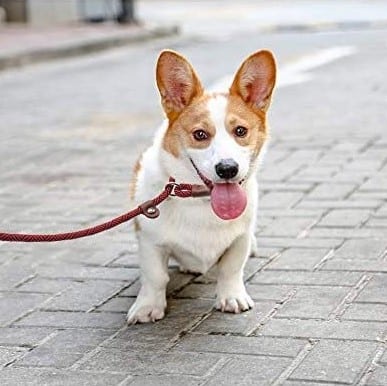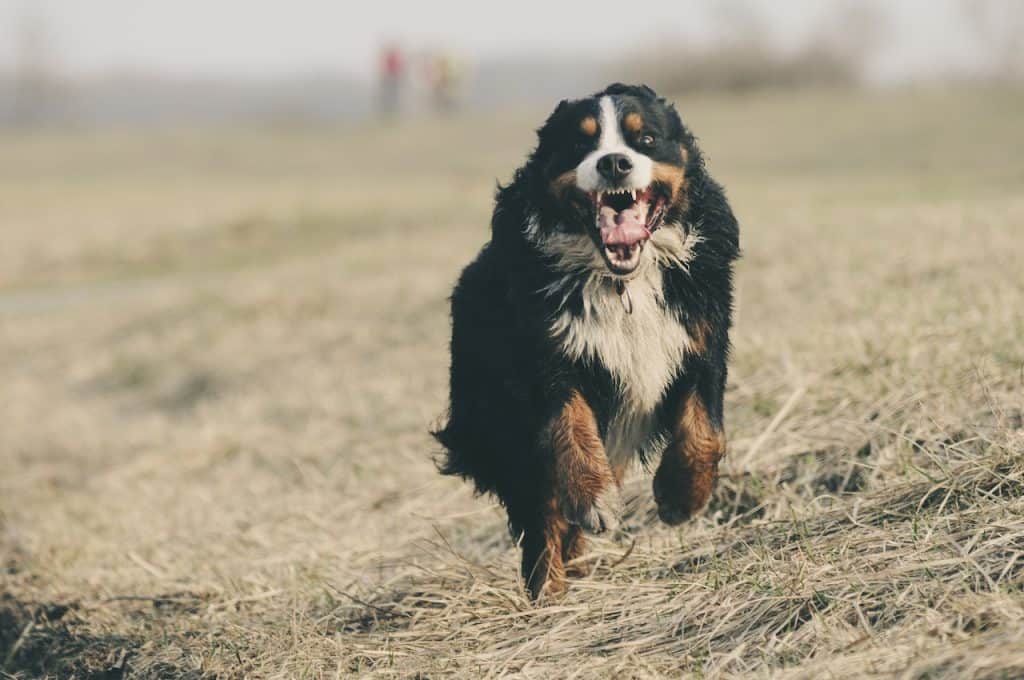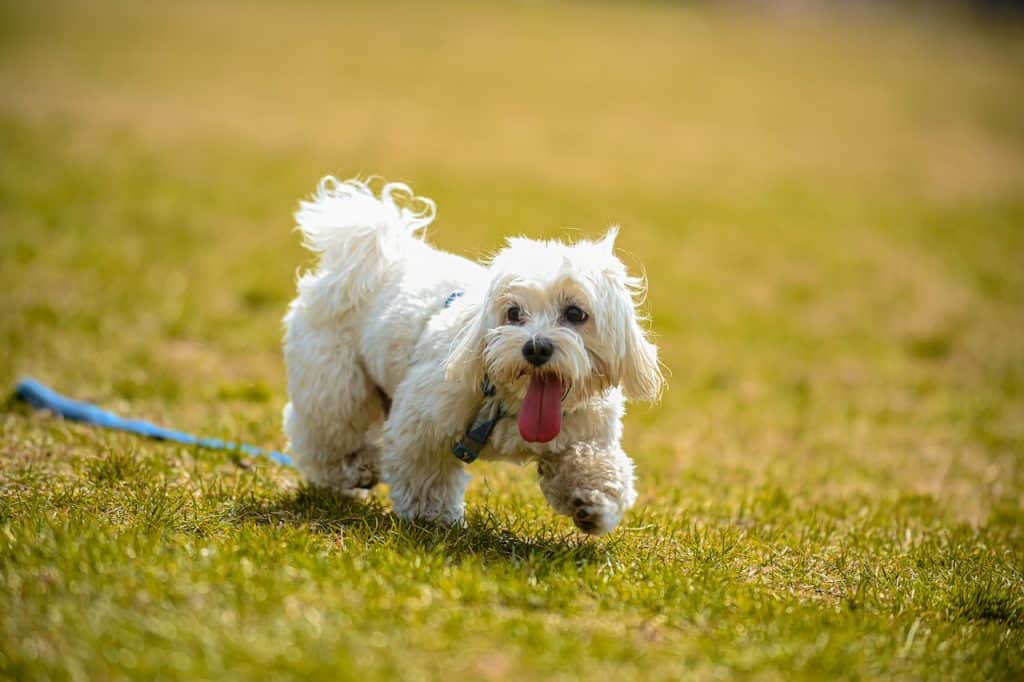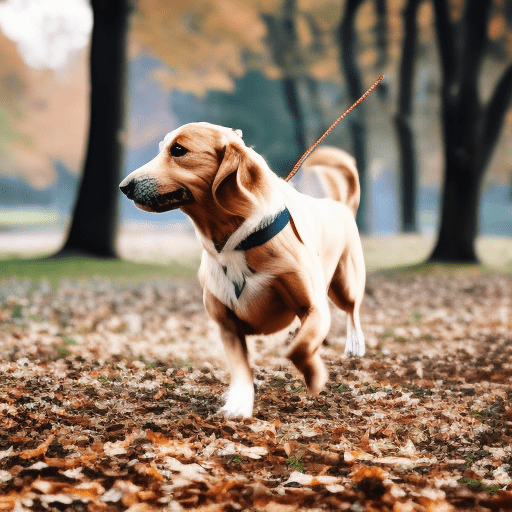Do you know the best time to exercise your dog? Like most people, you probably think it’s a good idea to work off that extra food right after they’ve eaten. But did you know that this could be dangerous for your pup? In this blog post, we’ll explain why dogs shouldn’t exercise after eating and what risks you could be putting them by doing so. We’ll also give tips on the best time to exercise your dog.
Dogs shouldn’t exercise after eating for a few reasons. First, it’s hard on their digestive system. Their food hasn’t had time to digest properly and could end up coming back up or giving them diarrhea. Second, exercising too soon after eating can increase the risk of bloat. Bloat is a condition that occurs when the stomach twists, trapping gas and fluid. It’s excruciating and can be deadly if not treated immediately.
Best time to exercise your dog
The best time to exercise or walk a dog is about an hour after eating. This gives their food time to digest a bit and won’t put your dog at risk for bloat or other digestive issues.
If you can’t exercise your dog an hour after eating, you can do a few things to help prevent bloat.
First, ensure they eat smaller meals more often throughout the day than one large meal. Second, feed them high-quality food that is easy to digest.
And finally, avoid strenuous exercise immediately after eating.

Can dogs run on an empty stomach?
It is perfectly safe for dogs to run on an empty stomach. Many experts believe that they should do so.
When a dog runs on a full stomach, there is a greater risk of bloat, which can be deadly.
Additionally, running on an empty stomach helps to burn fat more effectively.
As a result, dog owners who want their pets to stay healthy and fit should consider letting them run on an empty stomach.
Why should you avoid walking your dog after eating?
After a big meal, the last thing you probably want to do is go for a run. And it turns out that the same is true for your dog.
When your dog eats, its digestion slows down, and its blood flow redirects to its stomach and intestines to help with the process.
Exercise can stress their digestive system unnecessarily and cause issues like bloating, vomiting, and diarrhea.
How long Should I wait to take my dog out?
It’s essential to give your dog time to digest its food properly before exercising.
For puppies, it’s generally recommended to wait 30 minutes to an hour after eating before going for a walk or playtime.
For older dogs, the wait time is usually a bit longer, as they tend to have slower digestion. It’s best to wait at least 2 hours.
Experts typically recommend waiting at least two hours after a meal before exercising your dog.
However, every dog is different, so it’s always best to consult your veterinarian to see what they recommend for your pup.

What Happens When Your Dog Exercises After Food?
Whenever your dog eats, the food enters the stomach, where it starts to be digested by gastric juices. During this process, blood ow to the stomach increases as the body breaks down food. Once the food has been broken down enough, it moves into the small intestine, where most nutrient absorption occurs.
After a meal, exercising can cause significant problems because the increase in blood flow to the stomach can cause digestive upset.
The digestion process uses up a lot of energy, so exercise can be too much for a dog who has just eaten. Movement can cause gastric dilation and volvulus (GDV), a life-threatening condition when the stomach twists on itself.
For these reasons, it’s best to wait an hour after a meal before exercising your dog. And, if your dog is prone to GDV, it’s best to avoid strenuous exercise altogether.
This doesn’t mean dogs have to be lazy after eating. A light walk is OK, as it can help with digestion. Make sure you go slowly and keep an eye on your dog if he shows discomfort.
In addition to the risks mentioned earlier, others come with feeding your dog and taking it on a walk right after the meal. These include inhibiting circulation, interrupting digestion, vomiting, abdominal pain and discomfort, and cramps.
How long does it take for a dog to digest food?
According to PetMD, Most dogs typically digest their food within 6 to 8 hours. However, several factors can affect this, including the food’s type and quality, the meal’s size, and the individual dog’s metabolism.
For example, dry kibble is usually easier to digest than wet food, and small meals are typically digested more quickly than large ones.
In addition, some dogs may have trouble digesting certain types of food, such as fatty meats or carbohydrates. If your dog seems to be having difficulty digesting its food, it’s essential to talk to your vet to rule out any underlying health problems.
Overall, most dogs will be able to digest their food within a few hours without any problems.

Is it best not to exercise my dog after eating?
You may have heard that it’s not a good idea to walk your dog immediately after they’ve been fed. The thinking is that since the food hasn’t had time to digest properly, exercising could lead to stomach problems.
Though it may be tempting to head out for a walk immediately after feeding your dog, it’s best to wait an hour. This gives their food time to settle so the digestion process can begin.
Walking them sooner is OK if you have a young puppy because their stomachs are still developing, and they can handle small amounts of activity better.
How to tell if your dog is ready for exercise?
You’ve just fed your dog their favorite meal, and they’re looking at you with those big, puppy eyes, begging for a walk. But is your dog’s stomach ready for exercise? How long should I wait to take my dog out? Here are a few things to look for to see if your furry friend is ready to hit the pavement.
First, give them about 20-30 minutes to digest. You can tell they’re ready to go when they exhibit symptoms of hunger again, such as licking their lips or pawing at their food bowl.
Secondly, make sure they’re producing a solid stool. If they’re having diarrhea or vomiting, it’s best to wait until those symptoms have subsided before taking them out for a walk.
Finally, observe their energy levels. If they seem lethargic or uninterested in playing, they likely need more time to rest and digest their food. However, if they seem lively and eager, that’s a good sign they’re ready to go!

Should I feed or walk my dog first in the morning?
Deciding whether to walk or feed your dog first in the morning may seem like a minor issue, but it can make a big difference in your pet’s day.
If you choose to walk your dog first, it will likely be full of energy and ready to explore. This can be great for getting some extra exercise, but it also means that it may be less interested in food when you finally get around to feeding time.
On the other hand, if you choose to feed your dog first, it may be more likely to eat all of its food and have a steadier energy level for the rest of the day.
Of course, every dog is different, so you’ll need to experiment to see what works best for your pet.
Generally, the best time to feed a dog is twice a day, in the morning and at night. This will help them stay full and energized throughout the day.
Additional tips for exercising your dog
In addition to taking your dog for regular walks, there are other ways to help keep them fit and healthy.
One option is to take them for a run. If your dog is particularly energetic, this can be an excellent way to burn off some extra energy.
Just be sure to start slowly and build up their endurance gradually.
Another option is to play fetch with them. This is not only a great way of exercising their muscles, but it also helps to improve their coordination and flexibility. And if you have access to a park or other open space, you could let them off the leash for a while so that they can run around freely.
Just keep an eye on them and call them back if they wander too far away.
By incorporating some of these activities into your dog’s routine, you can help to ensure that they stay happy and healthy for years to come.
FAQs about dog exercise
How long should you walk your dog every day?
One of dog parents’ most common questions is how often they should walk their dogs. The answer to this question depends on your dog’s age, breed, and energy level. However, as a general rule of thumb, most dogs need at least 30 minutes of exercise per day. If your dog is particularly active, you may need to increase this.
Small breeds generally need between 20 and 30 minutes of exercise daily, while giant breeds may need up to two hours. Puppies and older dogs may also require shorter walks as they tire more easily. However, it’s essential to ensure that your dog gets enough exercise daily to stay healthy and happy.
Is it normal for my dog to pant a lot after exercise?
If your dog is panting more than usual after exercise, there are a few potential explanations. First, check to see if your dog is on a regular feeding and potty schedule. If not, an irregular schedule can cause your dog to pant more after exercise because they are not used to the exertion. Additionally, if your dog is overweight, it may be more likely to pant after exercise due to the extra strain on its body.
Finally, if you have been doing vigorous exercise with your dog, such as long walks or strenuous activities, they may be panting due to the increased activity.
In general, it is normal for dogs to pant after exercise, but if you are concerned about your dog’s health, it is always best to consult a veterinarian.
Conclusion
Taking your dog for a walk is a great way to bond with them and give them the necessary exercise. However, ensuring they’re correctly digesting their food before heading out is essential. This means waiting at least 30 minutes after they’ve eaten before taking them for a walk.
Additionally, it would be best to consider whether you want to walk or feed your dog first in the morning, as this can make a big difference in their day. And finally, don’t forget that you can do many other activities to help keep your dog fit and healthy.
By following these tips, you can ensure that your pet enjoys a long and happy life.
Recent Posts
As a dog owner, you want to ensure that you take proper care of your furry companion. A common question that many pet owners have is, "Can I walk my dog 30 minutes after eating?" Understanding the...
Have you ever considered getting an elevated dog bed for your furry friend, but wondered if it's worth the investment? If so, you're not alone. As dog owners, we all want to provide the best care for...

